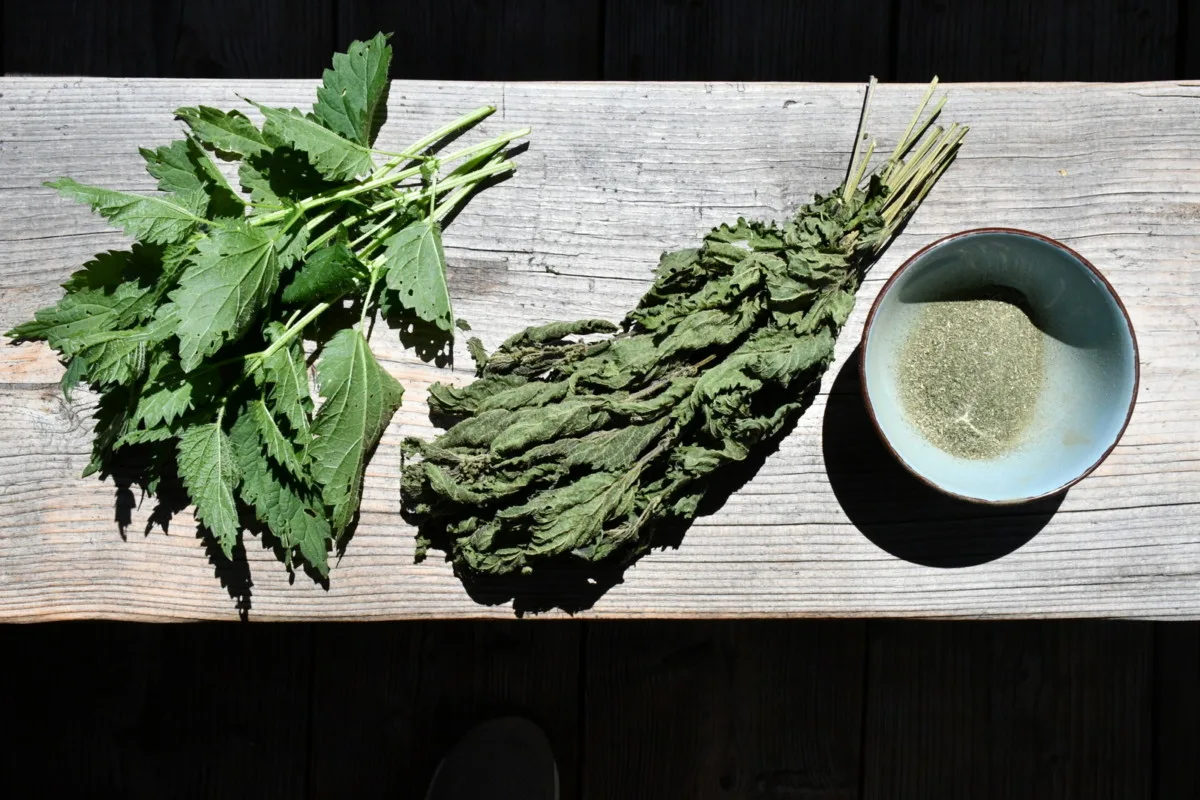
If you haven’t discovered nettle leaf powder yet, now is the time to taste the amazing flavor you’ve been missing. That’s right, nettle leaf powder is something that you eat – and it’s magically delicious. You can sprinkle it on fried potatoes, add it to soups, rice or stews, you can even make nettle sugar to coat energy bars and doughnuts. Bet you’ve never thought of that!
Don’t worry, it’s never too late to get started with eating foraged greens. After all, foraged foods are among the most reliable plants you can harvest every season without fail. Plus, you don’t even have to plant or tend to them as you would in a garden.
Nature is always producing food for free. If you know where to look, you’ll discover more than you and all the creatures in your area could ever eat. Knowing how to preserve that abundance is a crucial element for thrival.
Reasons You Should Be Eating Stinging Nettles
If you are already familiar with eating nettles, the following reasons to eat more of them may be nothing new. But if the thought of eating poky food from the wild fills your belly with some nervous jitters, read on before finding out how to make your own nettle powder. It will quell your concerns and give you the courage to try something new.
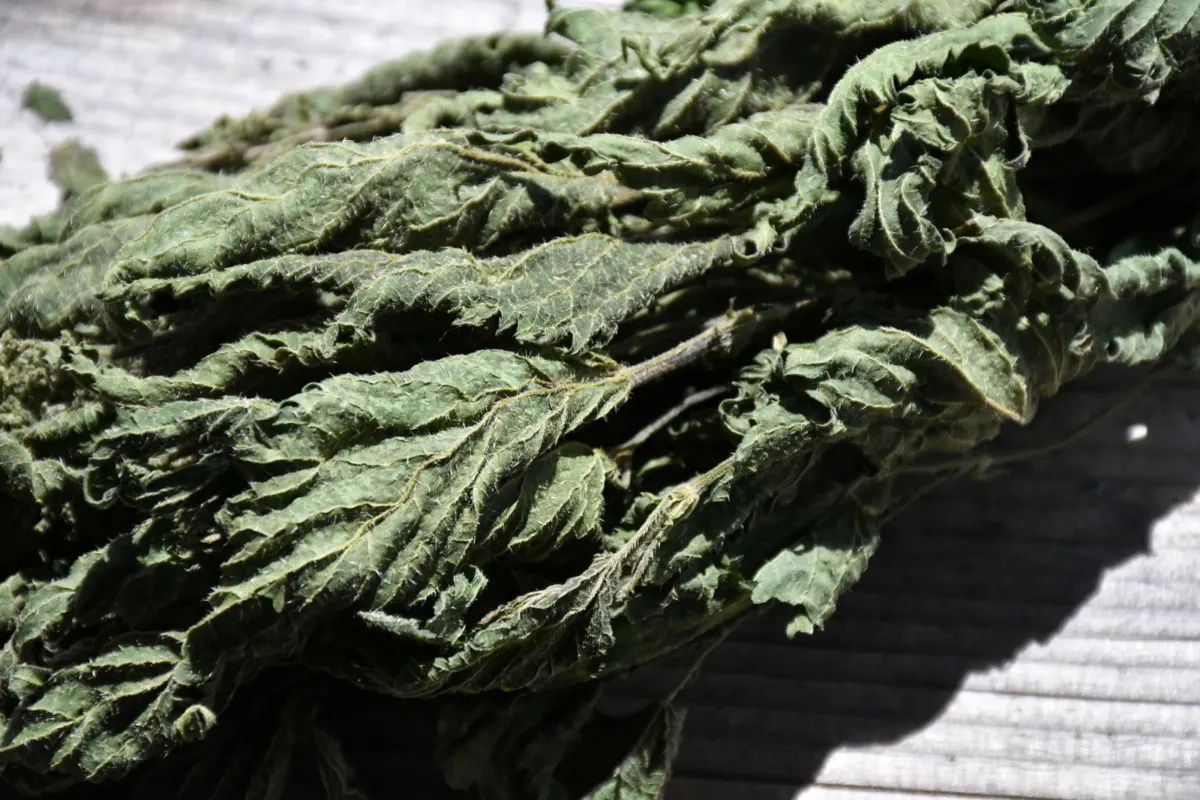
1. Nettles are protein-powered perennials.
Stinging nettle, as a perennial, is known to emerge year after year in early spring, making it one of the first greens to emerge. Cut the plant back in summer and you’ll get a second crop of leaves in early autumn.
Perennials play an important role in the health of your soil, as well as the insects that they attract. Whenever and wherever you have the space, consider adding some to your backyard and garden.
Digging a little deeper, you’ll also be happy to know that nettles contain a significant amount of protein.
2. Nettles are super nutritious.
Nettles contain a plethora of essential vitamins and minerals. They boast vitamins A, C and K, as well as several B vitamins.
From a mineral standpoint, they are rich in calcium, iron, magnesium, phosphorus, potassium and sodium.
Nettles also contain other fats, amino acids, polyphenols and pigments what are indispensable for our survival. I honestly don’t know why we aren’t all out foraging for them in springtime.
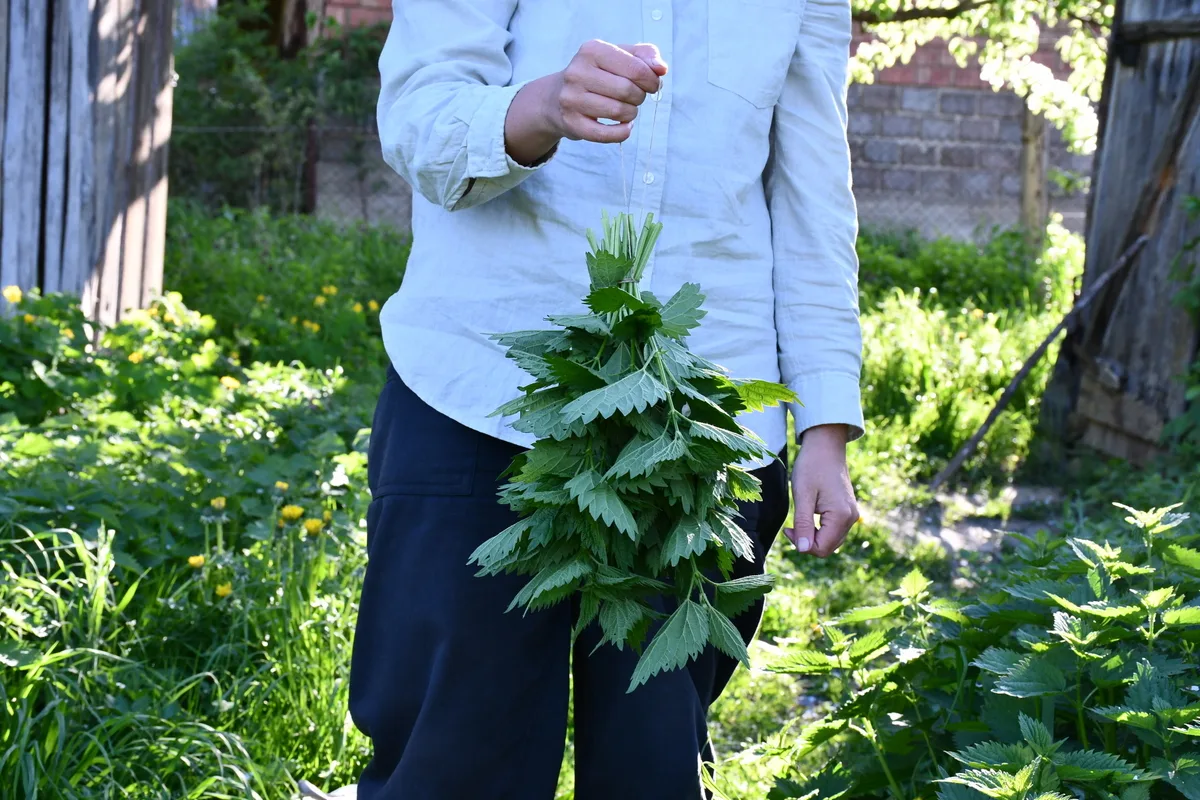
3. Nettles can help with joint pain and hay fever.
Nettle is a diuretic that helps to remove excess uric acid from the body. By extension, this helps to reduce joint pain, it can be particularly beneficial for those with arthritis.
Stinging nettles also act as an antihistamine, which may provide relief from sneezing and itchy eyes during allergy season. Personally, I’ve found that a nettle tincture is far more effective than nettle tea when the grass is flowering.
4. Nettles are good for hair and skin.
Nettle leaves are rich in silica and sulphur. In combination with horsetail (Eqiusetum arvense) it can be made into a soothing tea which can be applied topically to treat eczema and mild skin irritations. You’ll notice right away how green nettle powder is. This is from the presence of chlorophyll, an alkaline substance which is used for cleansing and detoxifying the body.
Not only that, eating or drinking nettles regularly may also help to boost your immune system because of its iron, vitamin C and selenium content.
If you are looking for a plant that boosts your energy and increases your brain power, look no further than a prickly patch of nettles. Just be sure to harvest with gloves, long pants and long sleeves.
When To Pick Nettles
In the search for nettles, let’s hope you see them before you feel them. When they are larger, you’re not likely to walk straight into them, however if they are young and ankle-height, it may happen that you cross paths if you aren’t careful.
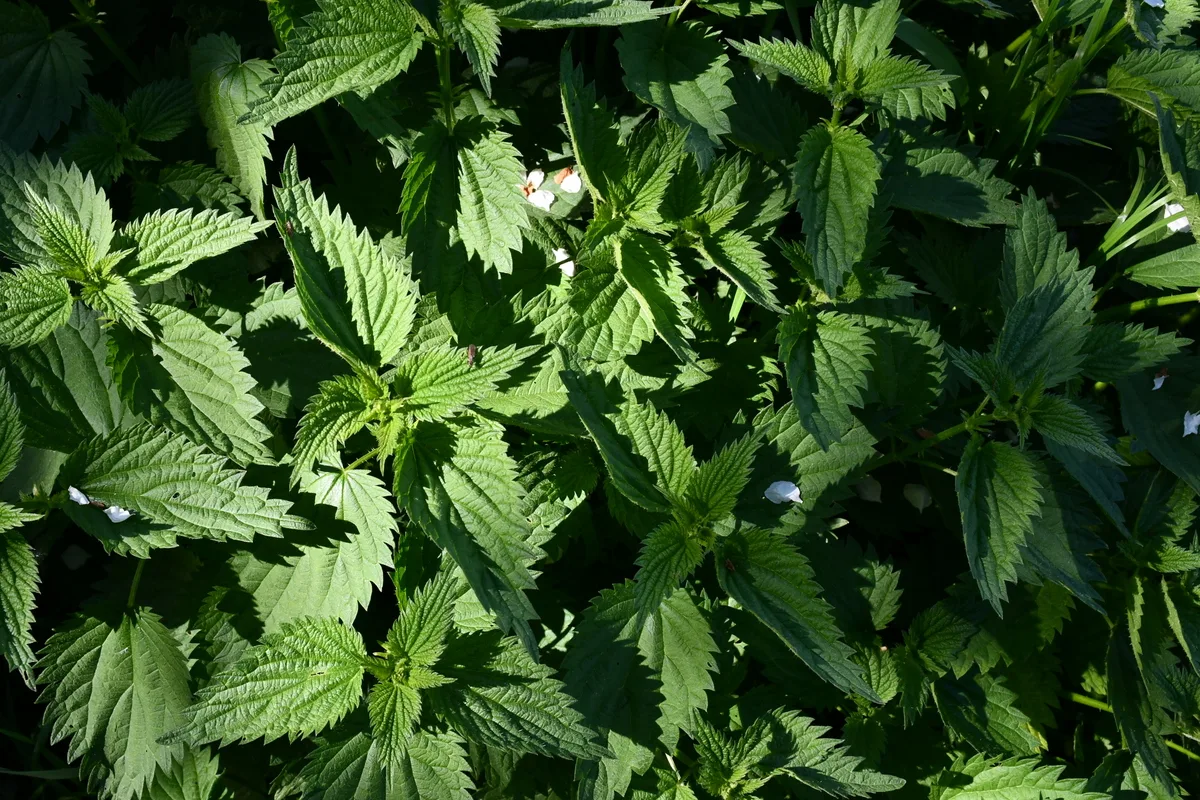
Nettles are best for picking when they are young and tender. This could be from late March to late May, depending on the weather and your location.
As you can see, the nettle tops are the most valuable. Wearing leather (or plastic) gloves, cut the stem back with not more than 3 sets of leaves.
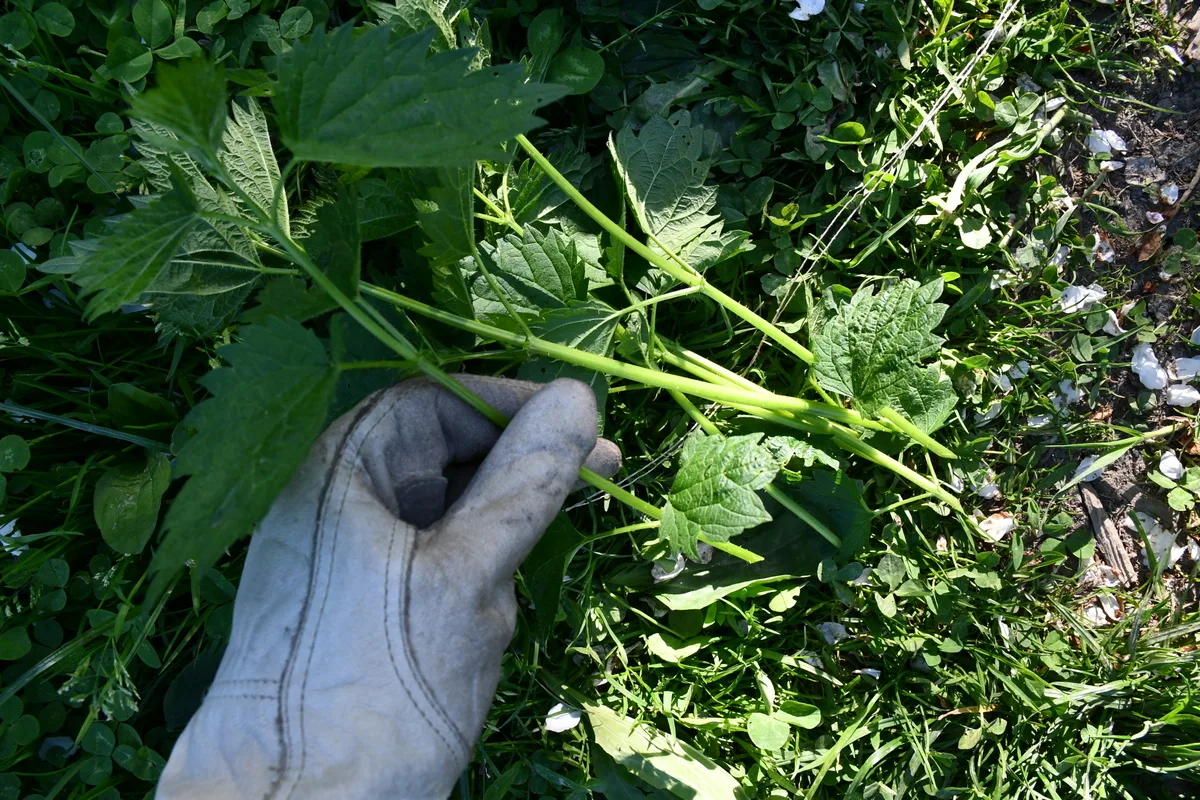
Cut several stems with scissors or pruners and tie them into a bundle to dry.
When Not To Pick Nettles
Tempting as it may be to pick nettles whenever you see them, they really are best when the season has just begun.
That being said, there are a handful of times when nettles shouldn’t be harvested:
- Don’t pick when nettles are flowering. Nor after flowering. At this stage of growth, nettles contain insoluble calcium carbonate crystals that may affect kidney function. Best to leave them for the insects that feed off them.
- Don’t pick nettles from polluted areas. This should go without saying – never harvest any plant in an area with known contaminants.
- Don’t pick nettles without proper clothing. It’s okay to pluck a leaf or two here and there with bare fingers, but when you are aiming for a bundle, be sure to wear gloves and long sleeves just in case you brush against the stems. They can leave a red rash that is uncomfortable at best.
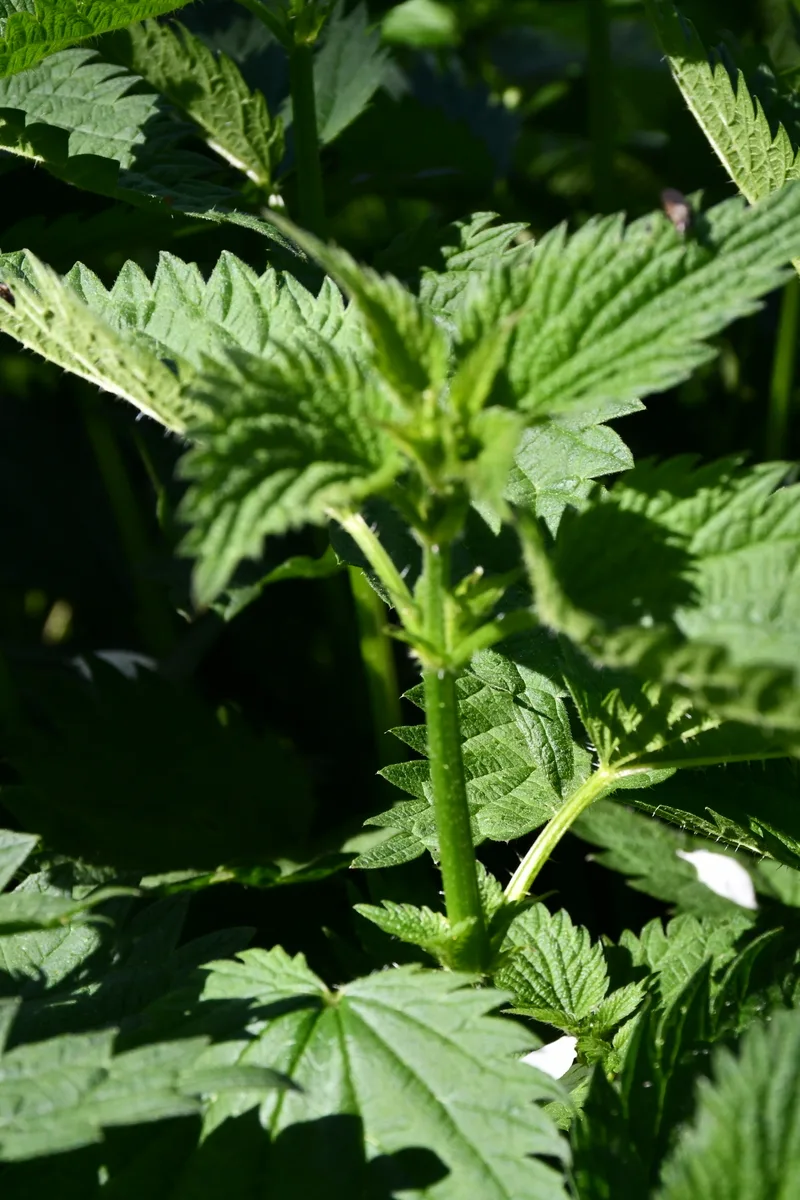
If you do get stung by your future nettle powder, be sure to use soap and water to wash the sting right away. It may happen that there are tiny hairs left in your skin, try using a pair of tweezers to get them out. If you aren’t near water for washing up, a natural remedy that is often nearby, are dock leaves. A baking soda bath also helps to ease the itchy pain.
Now, that you know when to harvest them, let’s get to that nettle powder.
How To Make Nettle Leaf Powder At Home
In order to make nettle powder, the first thing you need to do, is forage at the right time. We’ve already explained that above.
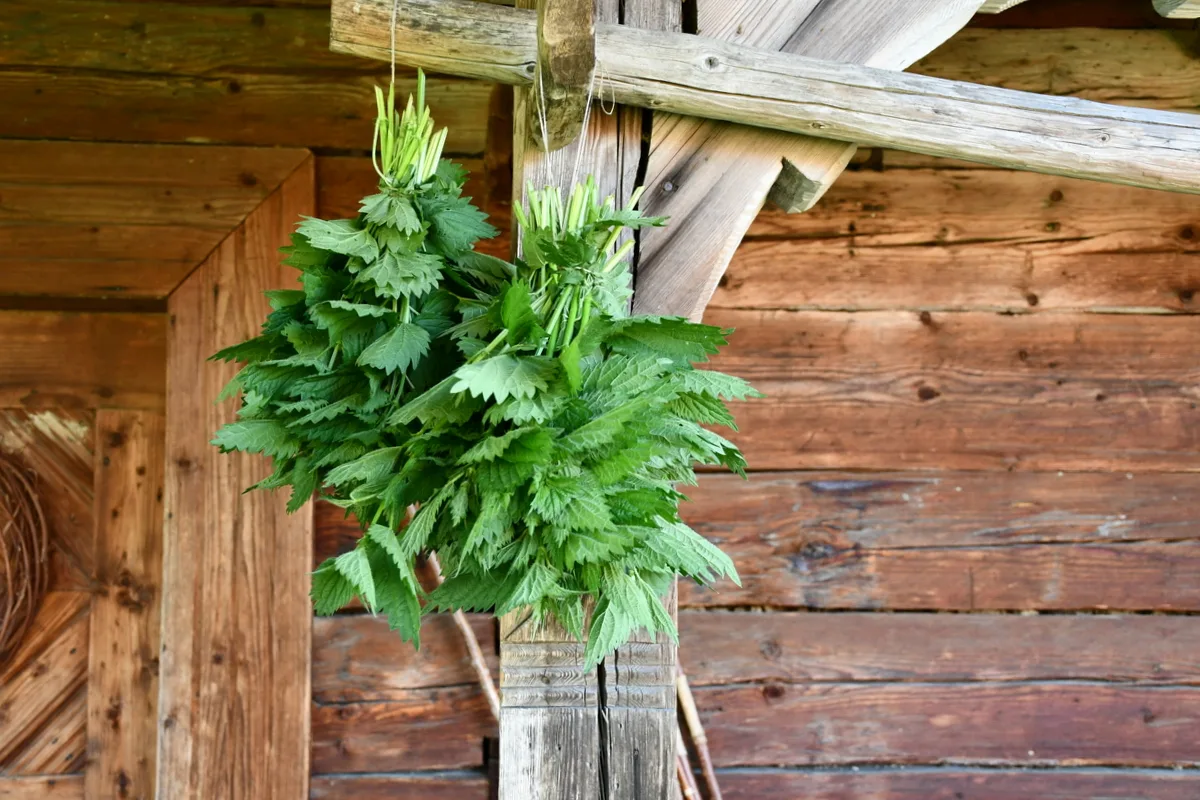
Once you’ve found that perfect patch of nettles, harvest away! At this stage, it’s hard to know how much powder you’ll get from your haul. Go ahead and harvest as much as you reasonably can, saving some nettle for the wild creatures too.
With a bundle, or ten, in hand, find a shaded, well-ventilated place to dry them, hanging them by their stems works great for us. They should be completely dry in about 3-5 days.
If you have a dehydrator and find it easier, cut the individual nettle leaves off the stem and set the leaves directly on the drying trays. Place them in the dehydrator on low, overnight, or until the leaves are completely dry.
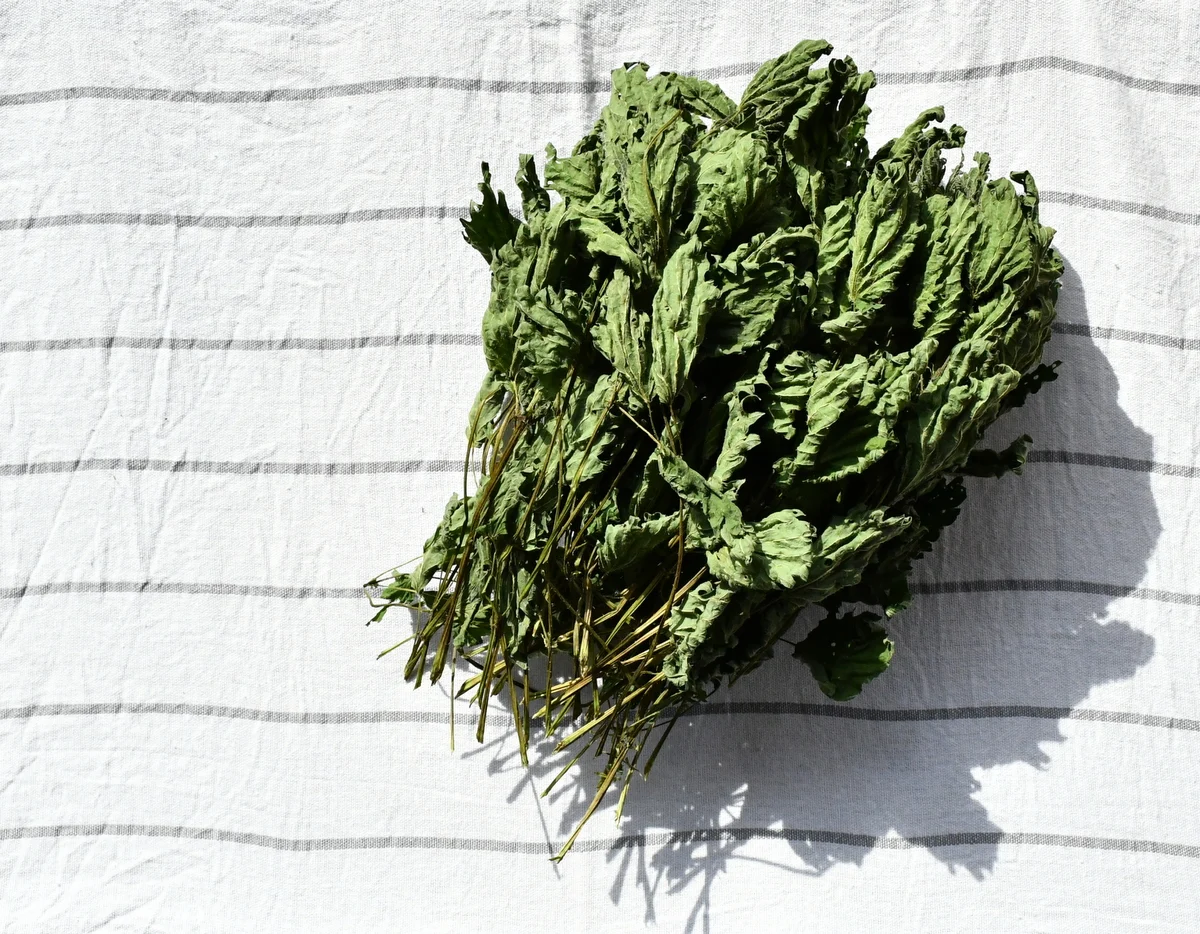
To wash or not to wash the stinging nettle leaves?
Our method of harvesting usually entails waiting for a day of rain, followed by a day of sunshine. It happens often enough in our neck of the woods to rely on it.
What’s important, is that you harvest the nettles when they are dry.
As we use the hanging method, we never wash the nettles we harvest. We inspect them closely while harvesting to ensure that they are no aphids on the stems, or eggs under the leaves. As far as spiders crawl, the time the leaves spend drying is often enough to let small creatures leave.
To wash or not to wash your wild nettle? It’s really up to you on this one. If it makes you feel better, go ahead and do it, it won’t hurt a thing. It will just take a little bit longer to dry.
How Much Nettle To Harvest For Nettle Leaf Powder?
As much or as little as you want, is the practical answer.
You can harvest a little for a sampler, or a lot if you intend to have enough for making nettle tea for yourself, or stinging nettle fertilizer tea for the garden.
If you decide that you like it, you’ll be happy if you harvested more than you need.
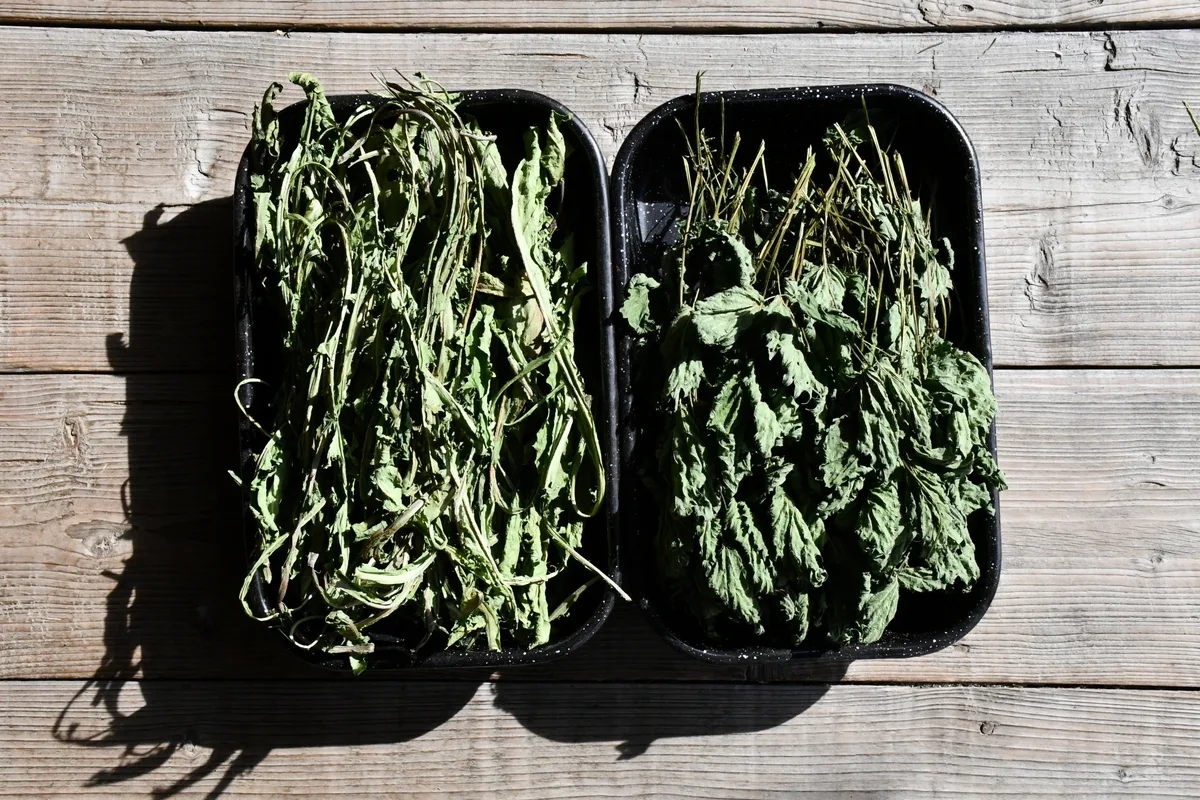
And if you find that you didn’t pick enough, you can always buy a bag from a respectable company, such as Mountain Rose Herbs. There you’ll also find nettle leaf extract, nettle leaf capsules, nettle leaf for tea and nettle root powder.
Grinding the Nettle Leaves
Let me start with what doesn’t work for grinding leaves into a powder. A manual coffee grinder will not work. You can try all you want with a hand crank spice grinder, only good luck can be wished there. It’s possible to use a mortar and pestle, though it will take a lot of work.
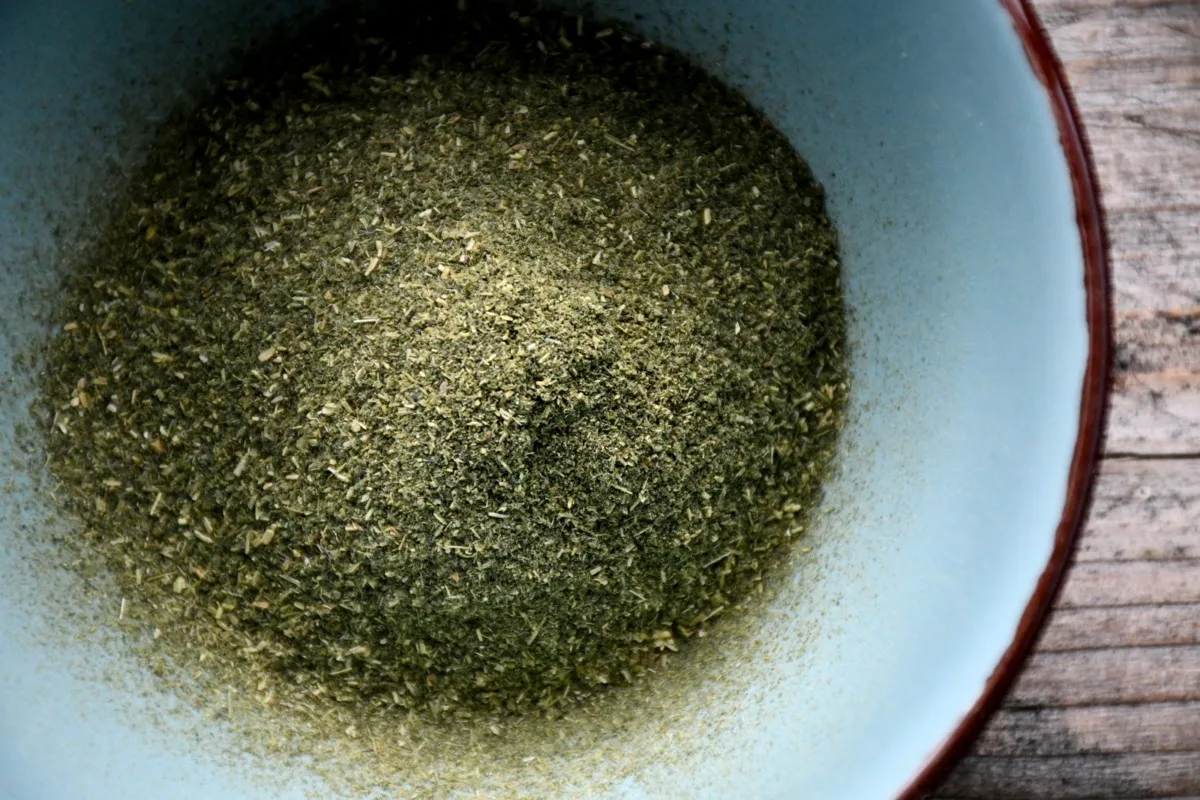
Instead, use an electric blender or a Vitamix to turn the leaves easily into a fine powder.
As long as the leaves feel dry and crumble easily when touched or rubbed, they are ready to be ground into a powder.
If you find that the powder is not fine enough for your taste, you can always sift the rough nettle leaf powder through a flour sifter.
Once your nettle leaves are powdered, there is no longer a chance of it stinging you.
Nettle powder should be stored in a glass jar in a dark, dry cabinet with your other spices.
The shelf-life of dried nettle leaf powder is about a year. It’s something you’ll want to make every spring-summer, so you always have a fresh batch.
- Note that drying and pulverizing destroys the fine hairs, making them perfectly safe to eat. Cooking does the same thing.
How To Use Nettle Leaf Powder In Cooking
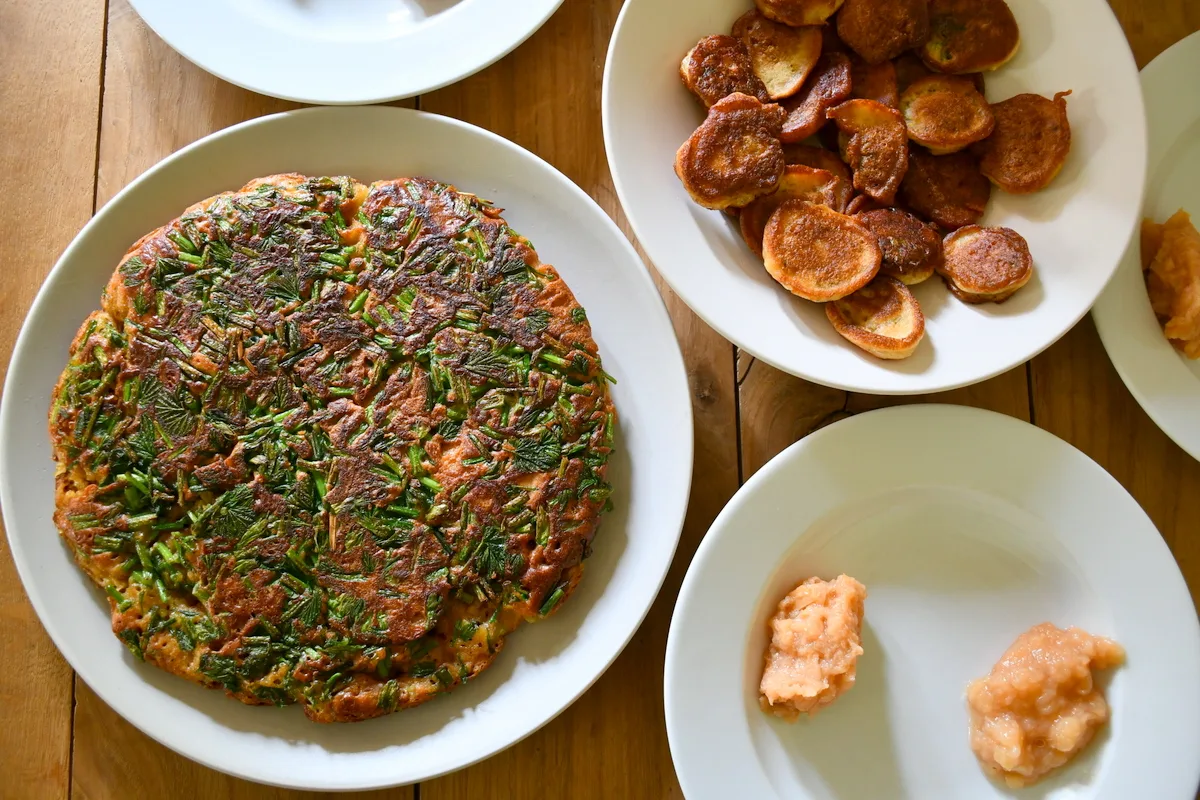
I tend to stay away from superfood labels, with the knowledge and understanding that many different foods are good in moderation. It’s not like you can automatically get some Popeye muscles from eating a can of spinach, nor will you gain muscle mass from eating nettle powder. Good health is all about eating a diverse, nutritious diet.
What nettles do for you, however, is provide you with an abundance of nutrients as listed above. Iron stands out in particular as one that is especially important for women. Vitamin A comes a close second.
Plus, nettle comes from the wild, and as long as you are harvesting from uncontaminated soil, you’ll only benefit from it. Remember, nettles are more than 30% protein, so they really are a nutritious whole food, which is free for the picking.
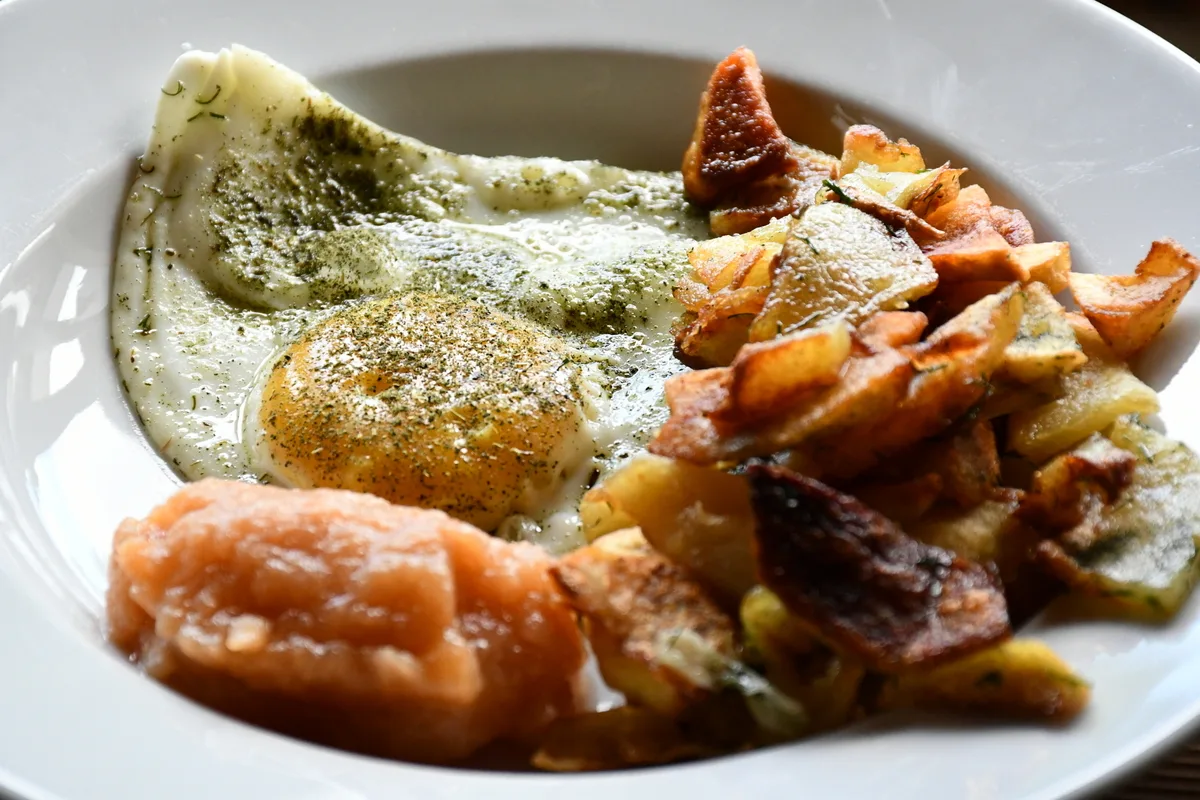
Nettle leaf powder can be sprinkled on or mixed into the following foods (and more):
- eggs
- rice
- pasta
- pizza
- stews
- smoothies
- yogurt
- granola
- raw and baked cakes
- protein balls
- nettle pasta
- bread and rolls
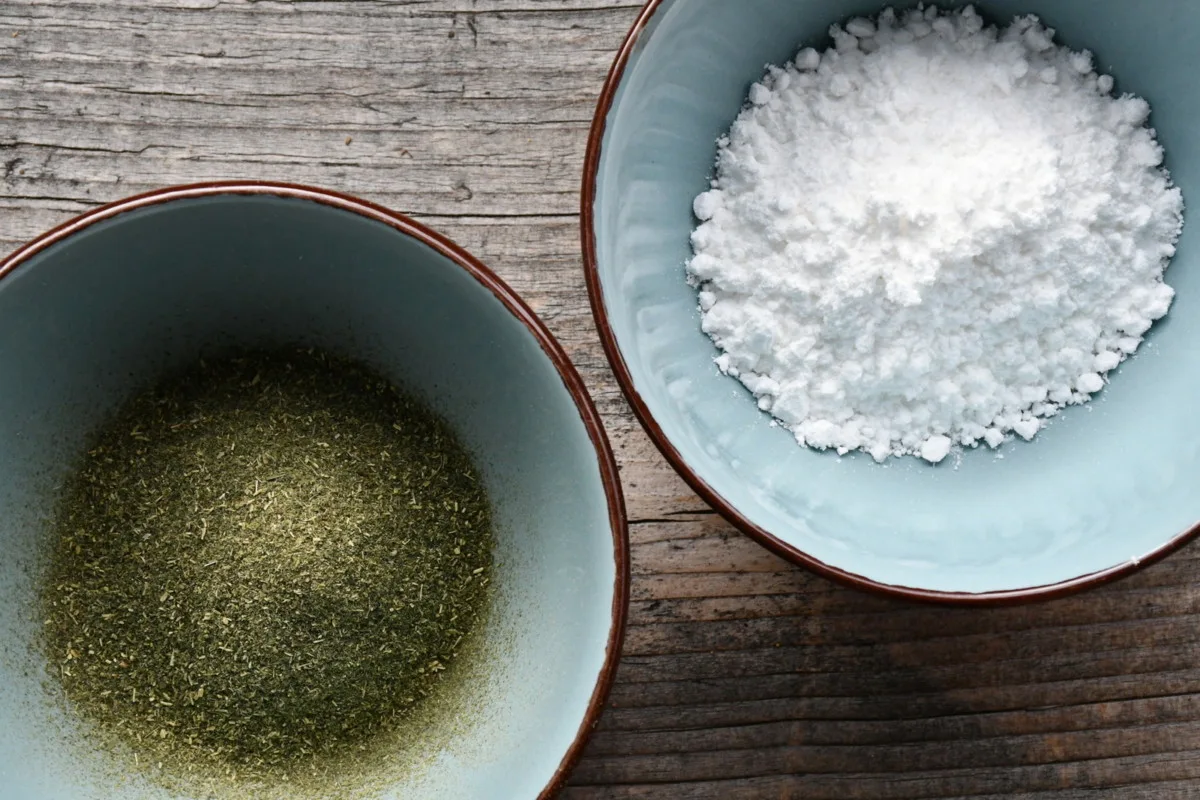
Nettle leaf powder can also be mixed with salt and other dried herbs to make a powdered mix of your own. How about combining it with garlic powder, paprika and salt? Then sprinkle that on your buttered toast? Sounds good to me!
For a sweet treat, nettle powder can be mixed with powdered sugar in any ratio that you want. This foraged essence can be added to pancakes, waffles or doughnuts.
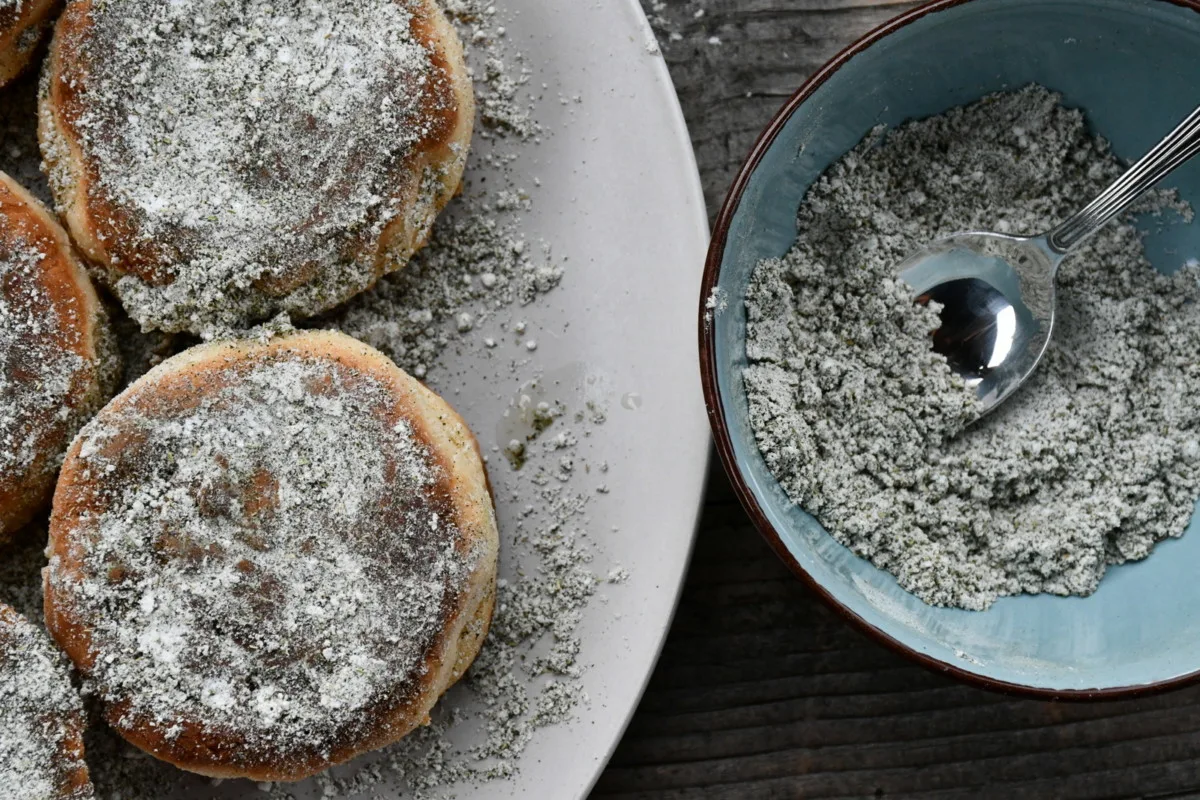
Nettle leaf powder combines wonderfully with other fruits and herbs you can turn into nutritious powders at home:
If you missed your chance for making nettle powder this year, make sure to bookmark this page and come back to it when nettles make their reappearance in spring. Till then, happy foraging.

Get the famous Rural Sprout newsletter delivered to your inbox.
Including Sunday musings from our editor, Tracey, as well as “What’s Up Wednesday” our roundup of what’s in season and new article updates and alerts.

